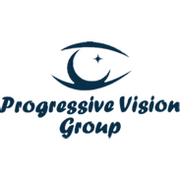
If you have no difficulty reading or identifying objects up close, but your vision blurs when looking at something farther away, you might have myopia, more commonly known as nearsightedness. This issue might have started when you were young and worsened with age, and now you're concerned you might need glasses. Getting examined by an optometrist for a definitive diagnosis is the first step in managing the condition and preventing complications.
What Is Nearsightedness?
Myopia typically starts in childhood and is often identified when a child has problems focusing on the blackboard. The condition can worsen over time, but with proper diagnosis and intervention, it usually stabilizes by the time a person reaches their early 20s until after the age of 40.
The problem can progress without treatment and become high myopia, resulting in sight-threatening complications. These include glaucoma and the development of cataracts.
What Causes It?
Nearsightedness is a refraction error. The difficulty occurs when the eyes can't focus light accurately on the retina because of the length of the eye from front to back, the shape of the cornea and lens, or the location of the lens and the cornea relative to each other.

Most children are born farsighted, a condition commonly known as hyperopia. Their vision is better at a distance than it is close up because the eyes are still too short from front to back at birth. Eye development or emmetropization happens rapidly in the first years of a child's life and continues until they are 6–8 years old. By then, the cornea and lens's shape and the eye's length come into balance to produce clear vision. By the end of the process, most children have low hyperopia, and a small percentage develop myopia.
How Is Nearsightedness Treated?
Treatment can entail efforts to correct the blurred vision, control the progression of the impairment, and minimize the risk of complications if the condition develops into high myopia. Early detection is the first step in effective treatment.
Once diagnosed, an optometrist might prescribe lens correction using standard prescription eyeglasses or contact lenses. They might recommend orthokeratology, the fitting of specially designed gas-permeable contact lenses worn overnight that gently reshape the cornea, allowing clear sight when you take the lenses out the next day. You could have LASIK or other refractive surgery once myopia stops progressing.
If you have problems seeing clearly at a distance, schedule an eye exam with an optometrist at Progressive Vision Group PA in High Point, NC. This vision center provides eye care, prescriptions, and vision care products to help you address any eye problems you're experiencing. Visit them online to learn more about their services, or call (336) 841-2028 to schedule an appointment.
About the Business
Have a question? Ask the experts!
Send your question

